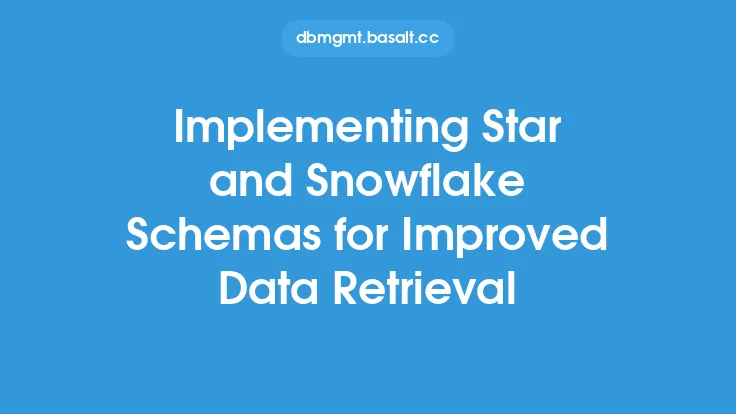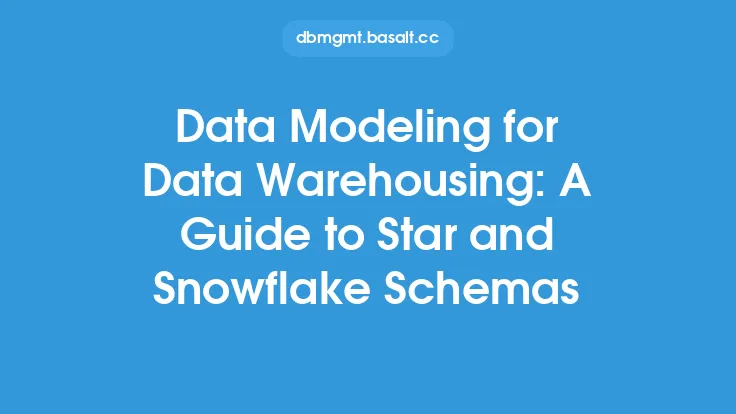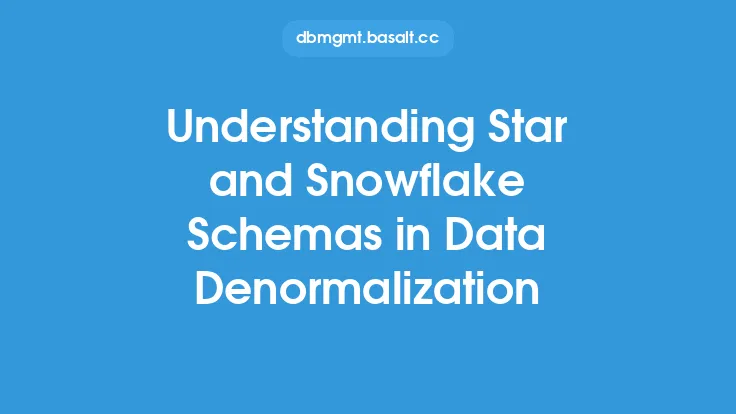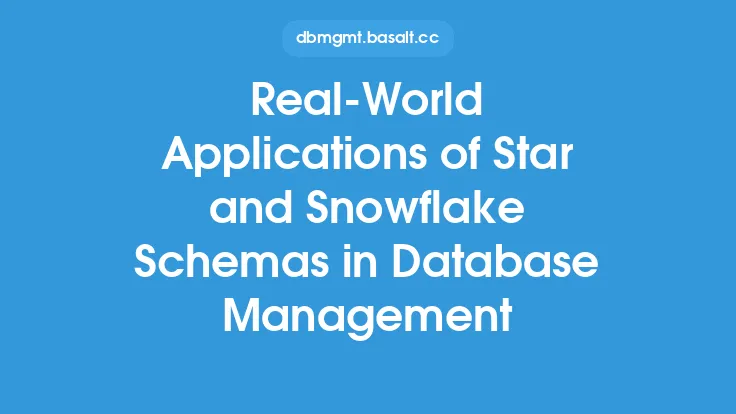When it comes to designing and maintaining star and snowflake schemas, there are several best practices that can help ensure optimal performance, scalability, and data integrity. These practices are essential for organizations that rely on data warehouses and business intelligence systems to support their decision-making processes. In this article, we will delve into the key considerations and techniques for designing and maintaining star and snowflake schemas, providing a comprehensive guide for data architects, designers, and administrators.
Introduction to Star and Snowflake Schemas
Star and snowflake schemas are data modeling techniques used in data warehousing to optimize query performance and simplify complex data relationships. A star schema consists of a central fact table surrounded by dimension tables, while a snowflake schema is an extension of the star schema, where each dimension table is further normalized into multiple related tables. Understanding the basics of these schemas is crucial for designing and maintaining them effectively.
Designing Star Schemas
When designing a star schema, it's essential to start with a clear understanding of the business requirements and the data that will be used to support them. The following best practices can help ensure a well-designed star schema:
- Identify the key performance indicators (KPIs) and metrics that will be used to measure business performance.
- Determine the grain of the fact table, which defines the level of detail at which data will be stored.
- Design the dimension tables to provide context for the fact table data, using techniques such as slow-changing dimensions and junk dimensions.
- Use surrogate keys to improve data integrity and simplify data relationships.
- Consider using a data vault architecture to provide a scalable and flexible framework for data integration and storage.
Designing Snowflake Schemas
Snowflake schemas are more complex than star schemas, as they involve multiple levels of normalization. The following best practices can help ensure a well-designed snowflake schema:
- Start with a star schema and then normalize each dimension table into multiple related tables.
- Use a consistent naming convention and data typing to simplify data relationships and improve data integrity.
- Consider using a hierarchical structure to organize the dimension tables, with each level representing a different level of granularity.
- Use bridge tables to resolve many-to-many relationships between dimension tables.
- Be cautious not to over-normalize the data, as this can lead to complex queries and poor performance.
Maintaining Star and Snowflake Schemas
Maintaining star and snowflake schemas requires ongoing effort to ensure that the data remains consistent, accurate, and up-to-date. The following best practices can help ensure effective maintenance:
- Establish a regular data refresh cycle to ensure that the data remains current and relevant.
- Use data validation and data cleansing techniques to identify and correct data errors.
- Monitor query performance and optimize the schema as needed to improve performance.
- Consider using a data governance framework to provide a structured approach to data management and maintenance.
- Use data lineage and data provenance techniques to track the origin and movement of data throughout the schema.
Optimizing Query Performance
Query performance is critical in star and snowflake schemas, as it directly impacts the ability of business users to access and analyze data. The following best practices can help optimize query performance:
- Use indexing and partitioning techniques to improve data access and reduce query execution time.
- Consider using a query optimization tool to analyze and optimize queries.
- Use aggregate tables and materialized views to pre-aggregate data and reduce query complexity.
- Avoid using complex queries with multiple joins and subqueries, as these can lead to poor performance.
- Consider using a column-store database or an in-memory database to improve query performance and reduce storage requirements.
Data Integrity and Security
Data integrity and security are essential in star and snowflake schemas, as they directly impact the accuracy and reliability of business decisions. The following best practices can help ensure data integrity and security:
- Use data validation and data cleansing techniques to identify and correct data errors.
- Implement data encryption and access controls to protect sensitive data.
- Use auditing and logging techniques to track data access and modifications.
- Consider using a data governance framework to provide a structured approach to data management and security.
- Use data backup and recovery techniques to ensure business continuity in the event of a data loss or system failure.
Conclusion
Designing and maintaining star and snowflake schemas requires a deep understanding of data modeling, data warehousing, and business intelligence. By following the best practices outlined in this article, organizations can create scalable, flexible, and high-performance data warehouses that support their business decision-making processes. Whether you're a data architect, designer, or administrator, this article provides a comprehensive guide to the key considerations and techniques for designing and maintaining star and snowflake schemas.





